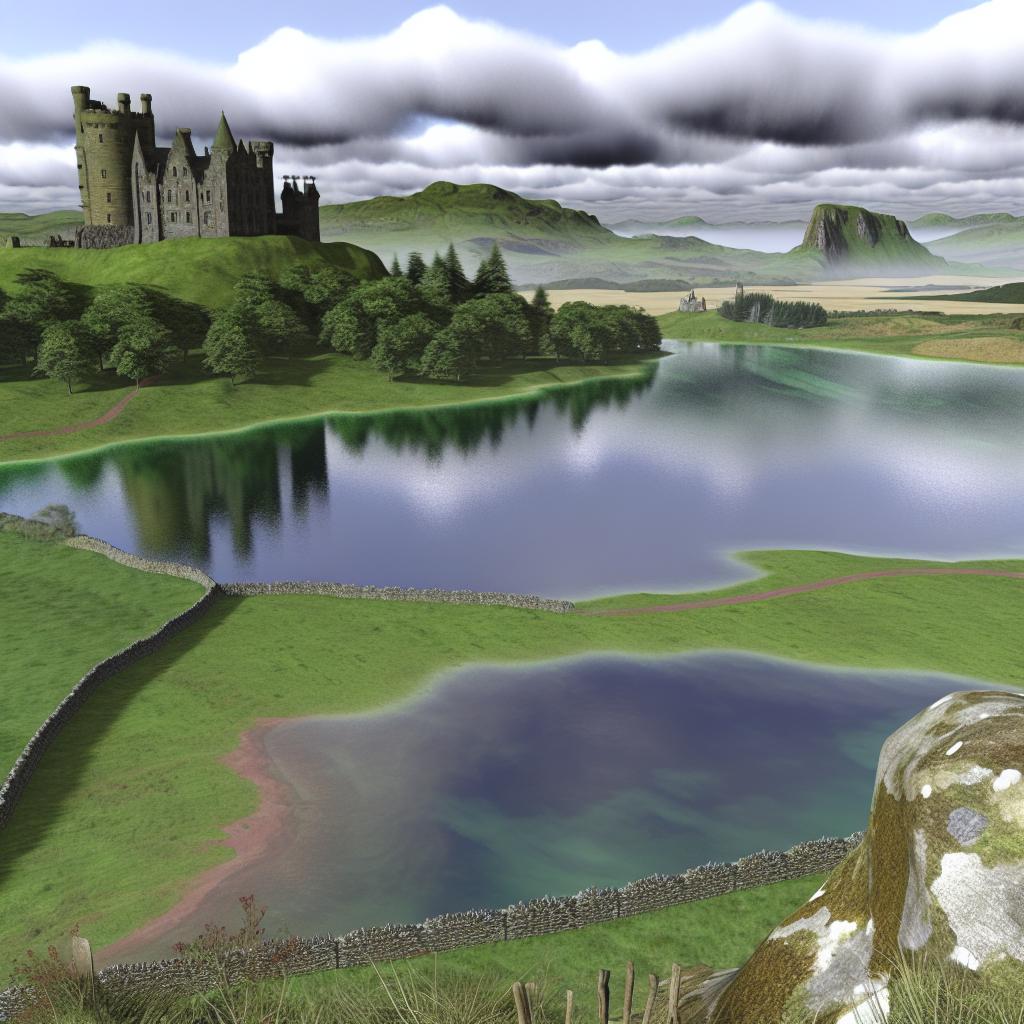Mythical and Legendary Lakes in the UK
The United Kingdom, rich in history and folklore, is home to numerous lakes steeped in myth and legend. These bodies of water are often associated with intriguing tales that have been passed down through generations. This article explores some of the most captivating mythical and legendary lakes in the UK.
Loch Ness
Perhaps the most famous of all the UK’s lakes is Loch Ness, located in the Scottish Highlands. This large body of freshwater stretches approximately 23 miles southwest of Inverness. Known throughout the world, the legend of the Loch Ness Monster, affectionately called “Nessie,” has fascinated both locals and tourists. First reported in 1933, sightings of the creature continue to incite curiosity and wonder, leading to a host of scientific investigations and enthusiastic searches by both professionals and amateur enthusiasts. More about Nessie can be found on the Loch Ness Official Website.
The allure of the Loch Ness Monster is not merely a modern phenomenon. The region around Loch Ness has a rich tapestry of folklore, with tales of strange creatures inhabiting the loch long before Nessie became a household name. The juxtaposition of modern technology with ancient myth is uniquely enthralling. Sonar searches and satellite tracking have all been employed to solve the mystery of the loch, capturing global attention and adding to the legend.
Lake Bala
Lake Bala, known as Llyn Tegid in Welsh, is nestled in Wales and is intrinsically linked with the legend of Tegid Foel. According to myth, the lake was formed when a great flood drowned the castle of Tegid Foel, a local chieftain. Legends suggest that beneath Bala’s serene waters, the remains of Tegid Foel’s sunken palace still rest. This story, like many in Welsh mythology, highlights the intertwining of natural landscapes with the supernatural.
Apart from its mythical significance, Lake Bala remains an attractive destination for outdoor enthusiasts and adventurers. As the largest natural lake in Wales, it offers opportunities for water sports including sailing, kayaking, and fishing. The juxtaposition of its recreational function with its mythical nature makes it an intriguing site, drawing visitors who are interested in both historical folklore and outdoor activities.
Dozmary Pool
Sitting in the mysterious landscapes of Cornwall, Dozmary Pool is frequently mentioned in the legends of King Arthur. This small, often ephemeral pool is reputed to be the lake where Sir Bedivere returned Excalibur, the legendary sword of King Arthur, to the Lady of the Lake. This connection to the Arthurian legends imbues the site with mystical allure, inviting those who seek the romantic, knightly tales of old.
Despite its modest size, the pool is enveloped in the dramatic and mysterious ambiance typical of the Cornwall region. The story of Excalibur’s return to the Lady of the Lake is one of many that form the Arthurian legend, a cornerstone of British folklore. These stories capture the imagination, making places like Dozmary Pool significant not just geographically, but culturally and historically.
Llyn y Fan Fach
Another Welsh lake, Llyn y Fan Fach, holds the enchanting tale of the Lady of the Lake. This legend involves a mystical lady who emerged from the waters to marry a local farmer, bestowing gifts and setting conditions that drove the tale’s narrative. Such stories highlight the mystical powers attributed to the lakes, portraying them as portals to otherworldly realms.
The narrative of Llyn y Fan Fach is deeply entrenched in Welsh tradition. It speaks not just of love and enchantment but also of human interaction with the natural world in a supernatural context. The lake, situated in the stunning Brecon Beacons National Park, attracts hikers and nature lovers. Its breathtaking scenery adds a tangible facet to the ethereal legend, blending natural beauty with mythical history.
Loch Awe
In the west of Scotland lies Loch Awe, the third-largest freshwater body in the country, which is equally rich in tales and oral traditions. Legends often speak of the clan chief MacArthur alongside a mythical serpent-like creature haunting its depths. Such stories contribute to the loch’s enigmatic reputation, drawing those captivated by its legends. Moreover, Loch Awe is home to the picturesque Kilchurn Castle, whose ruins add an aura of antiquity and mystery to the site.
Loch Awe is also a site of interest for anglers and offers various water sports. Its natural beauty is complemented by its cultural and historical significance, making it a multifaceted destination. Those exploring its banks and waters engage with Scotland’s storied past, rich with myths and legends of fearsome creatures and noble battles.
Conclusion
The lakes of the UK are not just natural treasures but storied landscapes, each holding a unique place in the cultural and mythical fabric of the region. From the mysterious depths of Loch Ness to the legendary tales of King Arthur and the enchanting stories of love at Llyn y Fan Fach, these waters invite exploration and reflection on Britain’s rich mythological heritage. Their enduring legends have stood the test of time, bringing together elements of history, nature, and the supernatural. For further reading on UK legends, visit British Myths and Legends.
